Shows
 The Marketing ArchitectsHow Brands REALLY Grow with Dale HarrisonMarketing can't force people to buy what they don't need. According to Dale Harrison, 65-90% of market share within a category is determined by brand recall at purchase.This week, Elena and Rob are joined by Dale Harrison, former experimental physicist turned marketing effectiveness expert. Dale breaks down the NBD-Dirichlet model that governs consumer behavior, explains why most growth stories have nothing to do with brilliant marketing, and reveals why reach (not targeting) drives market share. Plus, learn about the mathematical reality behind brand loyalty and why your job as a marketer is to make subtle nudges, not...2025-07-2946 min
The Marketing ArchitectsHow Brands REALLY Grow with Dale HarrisonMarketing can't force people to buy what they don't need. According to Dale Harrison, 65-90% of market share within a category is determined by brand recall at purchase.This week, Elena and Rob are joined by Dale Harrison, former experimental physicist turned marketing effectiveness expert. Dale breaks down the NBD-Dirichlet model that governs consumer behavior, explains why most growth stories have nothing to do with brilliant marketing, and reveals why reach (not targeting) drives market share. Plus, learn about the mathematical reality behind brand loyalty and why your job as a marketer is to make subtle nudges, not...2025-07-2946 min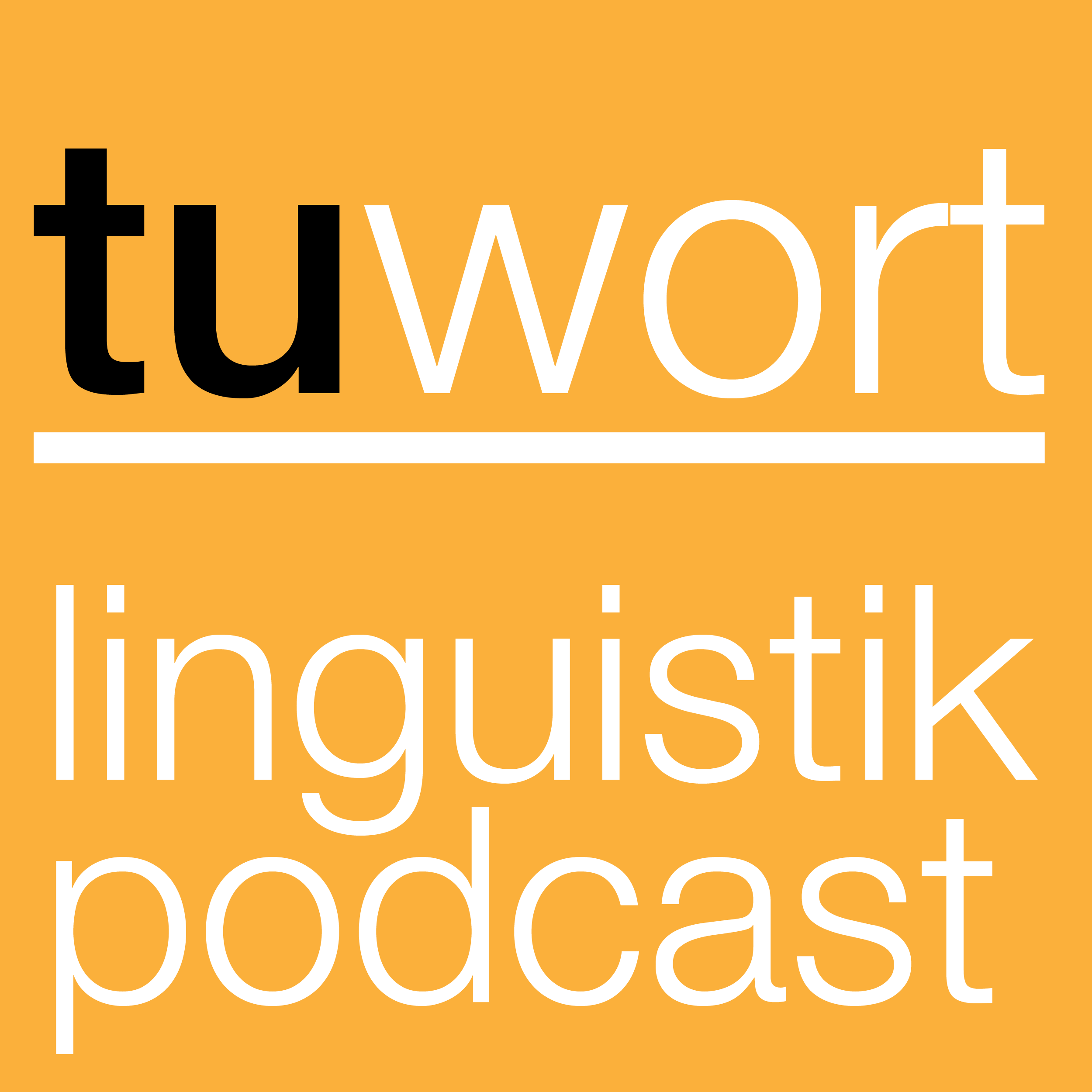 tuworttuwort #25
Aktuelles
Blatten: „Die Natur ist stärker als der Mensch“
Bergsturz von Blatten im Lötschental: https://www.srf.ch/news/schweiz/katastrophe-im-loetschental-ein-grollen-ein-beben-und-in-blatten-ist-nichts-mehr-wie-zuvor
BR Albert Rösti, UVEK (Dep. Umwelt, Verkehr, Energie und Komm.): „Die Natur ist stärker als der Mensch. Das wissen die Bergler. Und sie leben mit diesem Risiko. Heute haben wir aber ein ausserordentliches Ereignis erlebt, das in dieser Dimension nicht erwartet werden konnte bzw. die schlimmstmögliche Ausprägung gestaltet hat. Das Ereignis macht uns fassungslos und es schockiert, wenn man die Bilder gesehen hat und auch kurz in der Nähe war.“ http...2025-06-161h 46
tuworttuwort #25
Aktuelles
Blatten: „Die Natur ist stärker als der Mensch“
Bergsturz von Blatten im Lötschental: https://www.srf.ch/news/schweiz/katastrophe-im-loetschental-ein-grollen-ein-beben-und-in-blatten-ist-nichts-mehr-wie-zuvor
BR Albert Rösti, UVEK (Dep. Umwelt, Verkehr, Energie und Komm.): „Die Natur ist stärker als der Mensch. Das wissen die Bergler. Und sie leben mit diesem Risiko. Heute haben wir aber ein ausserordentliches Ereignis erlebt, das in dieser Dimension nicht erwartet werden konnte bzw. die schlimmstmögliche Ausprägung gestaltet hat. Das Ereignis macht uns fassungslos und es schockiert, wenn man die Bilder gesehen hat und auch kurz in der Nähe war.“ http...2025-06-161h 46 Best AI papers explainedPosterior Mean Matching Generative ModelingThis paper introduces Posterior Mean Matching (PMM), a novel generative modeling technique rooted in Bayesian inference. Unlike traditional diffusion models, PMM employs conjugate pairs of distributions to flexibly model diverse data types such as images and text. The core mechanism involves iteratively refining noisy data approximations through online Bayesian inference updates, with the convergence of the posterior mean to the true data sample forming the basis for generating new data. The authors demonstrate PMM's versatility by applying it to real-valued, count, and discrete data using Normal-Normal, Gamma-Poisson, and Dirichlet-Categorical models, respectively, establishing connections to stochastic differential equations...2025-05-1518 min
Best AI papers explainedPosterior Mean Matching Generative ModelingThis paper introduces Posterior Mean Matching (PMM), a novel generative modeling technique rooted in Bayesian inference. Unlike traditional diffusion models, PMM employs conjugate pairs of distributions to flexibly model diverse data types such as images and text. The core mechanism involves iteratively refining noisy data approximations through online Bayesian inference updates, with the convergence of the posterior mean to the true data sample forming the basis for generating new data. The authors demonstrate PMM's versatility by applying it to real-valued, count, and discrete data using Normal-Normal, Gamma-Poisson, and Dirichlet-Categorical models, respectively, establishing connections to stochastic differential equations...2025-05-1518 min chacesurca1970Formula To Predict Lottery Numbers PdfFile name: Formula To Predict Lottery Numbers Pdf Rating: 4.9/5 (Based on 5375 votes) 44398 downloads ======================== Link👉Formula To Predict Lottery Numbers Pdf ======================== Mar 19, · We use mathematical statistics theory to derive the Compound-Dirichlet-Multinomial (CDM) prediction model. We then use this model to predict winning numbers for . Mar 20, · (CDM) prediction model. We then use this model to predict winning numbers for the 6-number, 5-number, pick-4 and pick-3 lottery games. We also develop a strategy which . us to meas...2025-05-0100 min
chacesurca1970Formula To Predict Lottery Numbers PdfFile name: Formula To Predict Lottery Numbers Pdf Rating: 4.9/5 (Based on 5375 votes) 44398 downloads ======================== Link👉Formula To Predict Lottery Numbers Pdf ======================== Mar 19, · We use mathematical statistics theory to derive the Compound-Dirichlet-Multinomial (CDM) prediction model. We then use this model to predict winning numbers for . Mar 20, · (CDM) prediction model. We then use this model to predict winning numbers for the 6-number, 5-number, pick-4 and pick-3 lottery games. We also develop a strategy which . us to meas...2025-05-0100 min Loyalty UnlockedFollow the Crowd: The Science of Predicting Loyalty EnrolmentWhat if you could predict how millions of customers would behave before your loyalty programme even launched?
In this episode of Loyalty Unlocked, we explore why enrolment isn’t random — it’s remarkably consistent. From Galton’s bead box to Rogers’ Diffusion of Innovation and the predictive power of NBD-Dirichlet, we break down the behavioural science behind loyalty adoption.
You’ll hear how the 4–40–400 Rule has shaped some of the world’s biggest launches, including yuu Rewards, and how you can use it to estimate not just when customers will join — but how many. Because when you understand the crowd, you don’t need to gu2025-04-2212 min
Loyalty UnlockedFollow the Crowd: The Science of Predicting Loyalty EnrolmentWhat if you could predict how millions of customers would behave before your loyalty programme even launched?
In this episode of Loyalty Unlocked, we explore why enrolment isn’t random — it’s remarkably consistent. From Galton’s bead box to Rogers’ Diffusion of Innovation and the predictive power of NBD-Dirichlet, we break down the behavioural science behind loyalty adoption.
You’ll hear how the 4–40–400 Rule has shaped some of the world’s biggest launches, including yuu Rewards, and how you can use it to estimate not just when customers will join — but how many. Because when you understand the crowd, you don’t need to gu2025-04-2212 min The Marketing ArchitectsNerd Alert: The Dirichlet Effect: Predicting Brand LoyaltyWelcome to Nerd Alert, a series of special episodes bridging the gap between marketing academia and practitioners. We're breaking down highly involved, complex research into plain language and takeaways any marketer can use.In this episode, Elena and Rob explore how the Dirichlet model challenges common beliefs about brand loyalty. They reveal why most consumers aren't deeply loyal to specific brands and why reaching new customers matters more than increasing loyalty.Topics covered: [01:00] "The Dirichlet: A Comprehensive Model of Buying Behavior"[02:00] What products do we buy without brand loyalty?[03:45] How brand share predicts buying behavior[04:30] W...2025-03-2008 min
The Marketing ArchitectsNerd Alert: The Dirichlet Effect: Predicting Brand LoyaltyWelcome to Nerd Alert, a series of special episodes bridging the gap between marketing academia and practitioners. We're breaking down highly involved, complex research into plain language and takeaways any marketer can use.In this episode, Elena and Rob explore how the Dirichlet model challenges common beliefs about brand loyalty. They reveal why most consumers aren't deeply loyal to specific brands and why reaching new customers matters more than increasing loyalty.Topics covered: [01:00] "The Dirichlet: A Comprehensive Model of Buying Behavior"[02:00] What products do we buy without brand loyalty?[03:45] How brand share predicts buying behavior[04:30] W...2025-03-2008 min New Paradigm: AI Research SummariesHarvard Research: What if AI Could Redefine Its Understanding with New Contexts?This episode analyzes the research paper titled "In-Context Learning of Representations," authored by Core Francisco Park, Andrew Lee, Ekdeep Singh Lubana, Yongyi Yang, Maya Okawa, Kento Nishi, Martin Wattenberg, and Hidenori Tanaka from Harvard University, NTT Research Inc., and the University of Michigan. The discussion delves into how large language models, specifically Llama3.1-8B, adapt their internal representations of concepts based on new contextual information that differs from their original training data.The episode explores the methodology introduced by the researchers, notably the "graph tracing" task, which examines the model's ability to predict subsequent nodes in a...2025-02-0306 min
New Paradigm: AI Research SummariesHarvard Research: What if AI Could Redefine Its Understanding with New Contexts?This episode analyzes the research paper titled "In-Context Learning of Representations," authored by Core Francisco Park, Andrew Lee, Ekdeep Singh Lubana, Yongyi Yang, Maya Okawa, Kento Nishi, Martin Wattenberg, and Hidenori Tanaka from Harvard University, NTT Research Inc., and the University of Michigan. The discussion delves into how large language models, specifically Llama3.1-8B, adapt their internal representations of concepts based on new contextual information that differs from their original training data.The episode explores the methodology introduced by the researchers, notably the "graph tracing" task, which examines the model's ability to predict subsequent nodes in a...2025-02-0306 min The Marketing Meeting with Itir EraslanUnlocking Brand Growth with Carl DriesenerMarketing scientist Carl Driesener joins the show for a mini-masterclass on brand growth based on research insights from the Ehrenberg Bass Institute, where he is an associate professor. He and Itir cover how brand equity should be measured through consumer research and category entry points, the benefits of the "pick any" method for measuring brand image, why brand loyalty is often overstated, and the real source of brand growth. The discussion covers topics like pricing power, mental and physical availability in marketing, and the importance of maintaining presence in both digital and physical retail environments. By the end, some...2025-01-0946 min
The Marketing Meeting with Itir EraslanUnlocking Brand Growth with Carl DriesenerMarketing scientist Carl Driesener joins the show for a mini-masterclass on brand growth based on research insights from the Ehrenberg Bass Institute, where he is an associate professor. He and Itir cover how brand equity should be measured through consumer research and category entry points, the benefits of the "pick any" method for measuring brand image, why brand loyalty is often overstated, and the real source of brand growth. The discussion covers topics like pricing power, mental and physical availability in marketing, and the importance of maintaining presence in both digital and physical retail environments. By the end, some...2025-01-0946 min Currently ConsideringGlobal AI Strategies | a 2023 Report
This 2023 report, produced by the AI Strategies Team at George Mason University and the Stimson Center, analyzes the national AI policies of 54 countries. It identifies clusters of nations with similar priorities and strategies and describes the "AI Wardrobe" of policy elements common to national AI plans. The researchers use Latent Dirichlet Allocation (LDA) and Ensemble LDA (eLDA) to analyze 213 documents, including national and internal policies. Their findings show the global landscape of AI policy priorities, revealing the emphasis on workforce development, data governance, and economic growth in various national AI plans. The report concludes by identifying three key takeaways...2024-10-2421 min
Currently ConsideringGlobal AI Strategies | a 2023 Report
This 2023 report, produced by the AI Strategies Team at George Mason University and the Stimson Center, analyzes the national AI policies of 54 countries. It identifies clusters of nations with similar priorities and strategies and describes the "AI Wardrobe" of policy elements common to national AI plans. The researchers use Latent Dirichlet Allocation (LDA) and Ensemble LDA (eLDA) to analyze 213 documents, including national and internal policies. Their findings show the global landscape of AI policy priorities, revealing the emphasis on workforce development, data governance, and economic growth in various national AI plans. The report concludes by identifying three key takeaways...2024-10-2421 min Dazibao Le PodcastEpisode 32 : Jeanne - Wikipédia & Politique(s)Aujourd’hui, je suis ravie d’accueillir Jeanne Vermeirsche pour parler de sa thèse : Sur les traces d’un « Wikipédia politique » : polarisation, transnationalisation et contextualisation des discours politiques et médiatiques sur le nationalisme ».
Plongeons ensemble dans un monde à part entière, à la rencontre de la communauté wikipédienne, à la découverte de ses règles, de ses guerres d’édition et des gardiens vigilants de sa « neutralité ».Jeanne cherche à déterminer si le Wikipédia francophone est "poreux" et si on peut retrouver dans ses pages, des éléments de discours politiques autour du nationalisme.
Mon inv...2024-10-221h 56
Dazibao Le PodcastEpisode 32 : Jeanne - Wikipédia & Politique(s)Aujourd’hui, je suis ravie d’accueillir Jeanne Vermeirsche pour parler de sa thèse : Sur les traces d’un « Wikipédia politique » : polarisation, transnationalisation et contextualisation des discours politiques et médiatiques sur le nationalisme ».
Plongeons ensemble dans un monde à part entière, à la rencontre de la communauté wikipédienne, à la découverte de ses règles, de ses guerres d’édition et des gardiens vigilants de sa « neutralité ».Jeanne cherche à déterminer si le Wikipédia francophone est "poreux" et si on peut retrouver dans ses pages, des éléments de discours politiques autour du nationalisme.
Mon inv...2024-10-221h 56 Teachers in the DungeonSeason 3, Ep. 35: Telessaria Returns, with Dolphins, Seasickness and Lots of Crabby PlayersRix, Dirichlet and the rest return as our game table returns to the Telessaria adventure! It's all about ocean travel, nausea Con saves and some rather unpleasant, demonic merrow this session.
Connect with us: teachersinthedungeon on Instagram and Facebook, @dungeonteachers on X and teachersinthedungeon@gmail.com2024-08-2739 min
Teachers in the DungeonSeason 3, Ep. 35: Telessaria Returns, with Dolphins, Seasickness and Lots of Crabby PlayersRix, Dirichlet and the rest return as our game table returns to the Telessaria adventure! It's all about ocean travel, nausea Con saves and some rather unpleasant, demonic merrow this session.
Connect with us: teachersinthedungeon on Instagram and Facebook, @dungeonteachers on X and teachersinthedungeon@gmail.com2024-08-2739 min Solfate Podcast - Interviews with blockchain founders/builders on SolanaFastest blockchain payments on Solana with Sphere Pay (feat. Arnold, co-founder of Sphere)A conversation with Arnold, the co-founder of Sphere (a payments and banking platform on Solana).PS: We are happy to announce the launch of our Solfate Drip channel where you can collect Solfate Podcast episodes as digital collectibles! Subscribe to our Drip channel today: drip.haus/solfate (we have some fun experiments planned)SummaryArnold shares his background and early experiences with crypto, including his journey to building Sphere on the Solana blockchain. He discusses the benefits of blockchain and the pragmatic approach to decentralization. Arnold also emphasizes the importance...2024-06-1158 min
Solfate Podcast - Interviews with blockchain founders/builders on SolanaFastest blockchain payments on Solana with Sphere Pay (feat. Arnold, co-founder of Sphere)A conversation with Arnold, the co-founder of Sphere (a payments and banking platform on Solana).PS: We are happy to announce the launch of our Solfate Drip channel where you can collect Solfate Podcast episodes as digital collectibles! Subscribe to our Drip channel today: drip.haus/solfate (we have some fun experiments planned)SummaryArnold shares his background and early experiences with crypto, including his journey to building Sphere on the Solana blockchain. He discusses the benefits of blockchain and the pragmatic approach to decentralization. Arnold also emphasizes the importance...2024-06-1158 min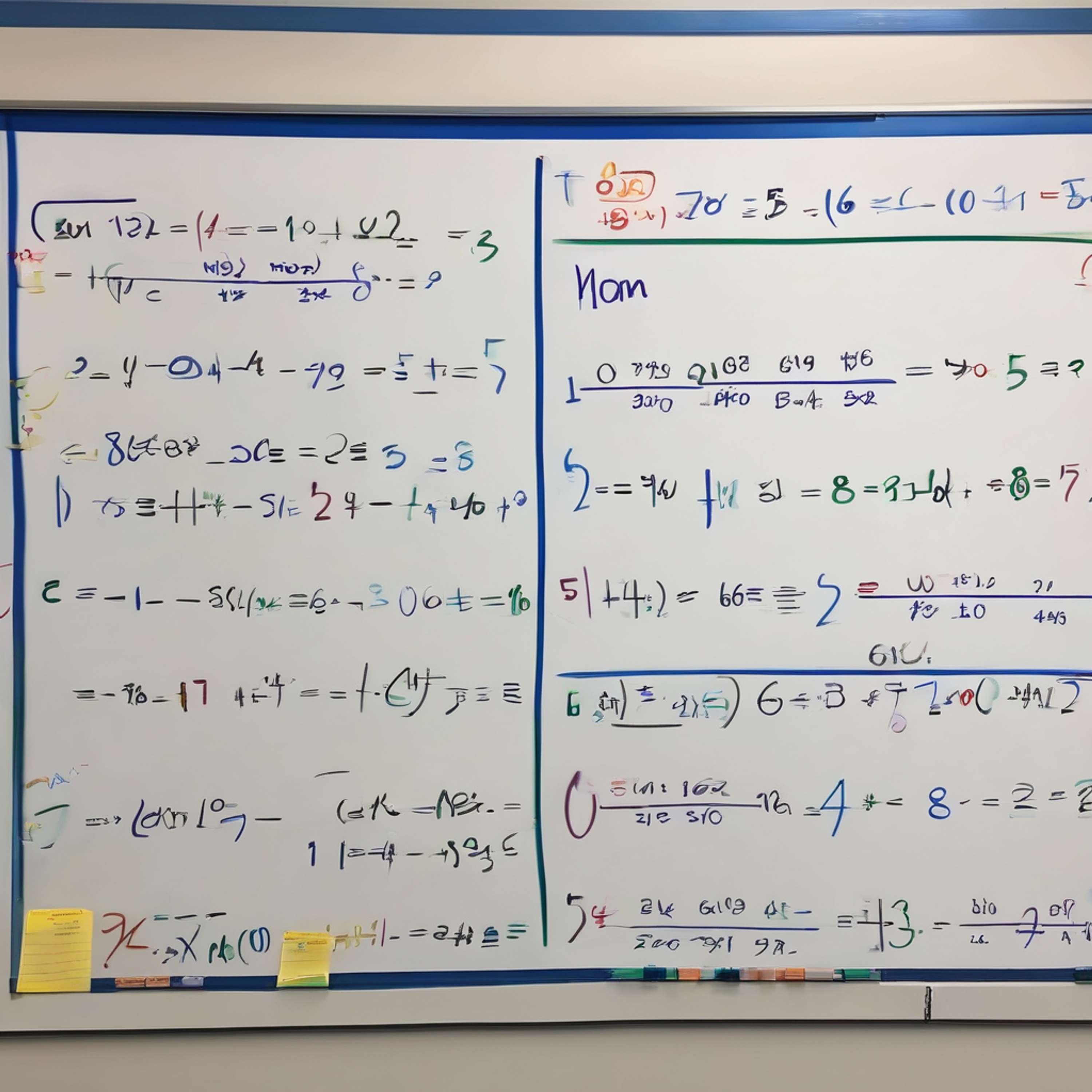 Tech Stories Tech Brief By HackerNoonDiscrete Mean Estimates and the Landau-Siegel Zero: Appendix B. Some Arithmetic Sums
This story was originally published on HackerNoon at: https://hackernoon.com/discrete-mean-estimates-and-the-landau-siegel-zero-appendix-b-some-arithmetic-sums.
Dive into Appendix B, where we prove Lemmas 15.1 and 17.1 regarding arithmetic sums with detailed mathematical analysis and proofs.
Check more stories related to tech-stories at: https://hackernoon.com/c/tech-stories.
You can also check exclusive content about #analytic-number-theory, #mathematical-sciences, #distribution-of-zeros, #siegel's-theorem, #dirichlet-l-functions, #primitive-character-modulus, #landau-siegel-zero, #zeta-function, and more.
This story was written by: @eigenvalue. Learn more about this writer by checking @eigenvalue's about page,
and for more stories, please visit hackernoon.com.
Appendix B delves into proving Lemmas 15.1 and 17.1 concerning arithmetic sums...2024-06-0602 min
Tech Stories Tech Brief By HackerNoonDiscrete Mean Estimates and the Landau-Siegel Zero: Appendix B. Some Arithmetic Sums
This story was originally published on HackerNoon at: https://hackernoon.com/discrete-mean-estimates-and-the-landau-siegel-zero-appendix-b-some-arithmetic-sums.
Dive into Appendix B, where we prove Lemmas 15.1 and 17.1 regarding arithmetic sums with detailed mathematical analysis and proofs.
Check more stories related to tech-stories at: https://hackernoon.com/c/tech-stories.
You can also check exclusive content about #analytic-number-theory, #mathematical-sciences, #distribution-of-zeros, #siegel's-theorem, #dirichlet-l-functions, #primitive-character-modulus, #landau-siegel-zero, #zeta-function, and more.
This story was written by: @eigenvalue. Learn more about this writer by checking @eigenvalue's about page,
and for more stories, please visit hackernoon.com.
Appendix B delves into proving Lemmas 15.1 and 17.1 concerning arithmetic sums...2024-06-0602 min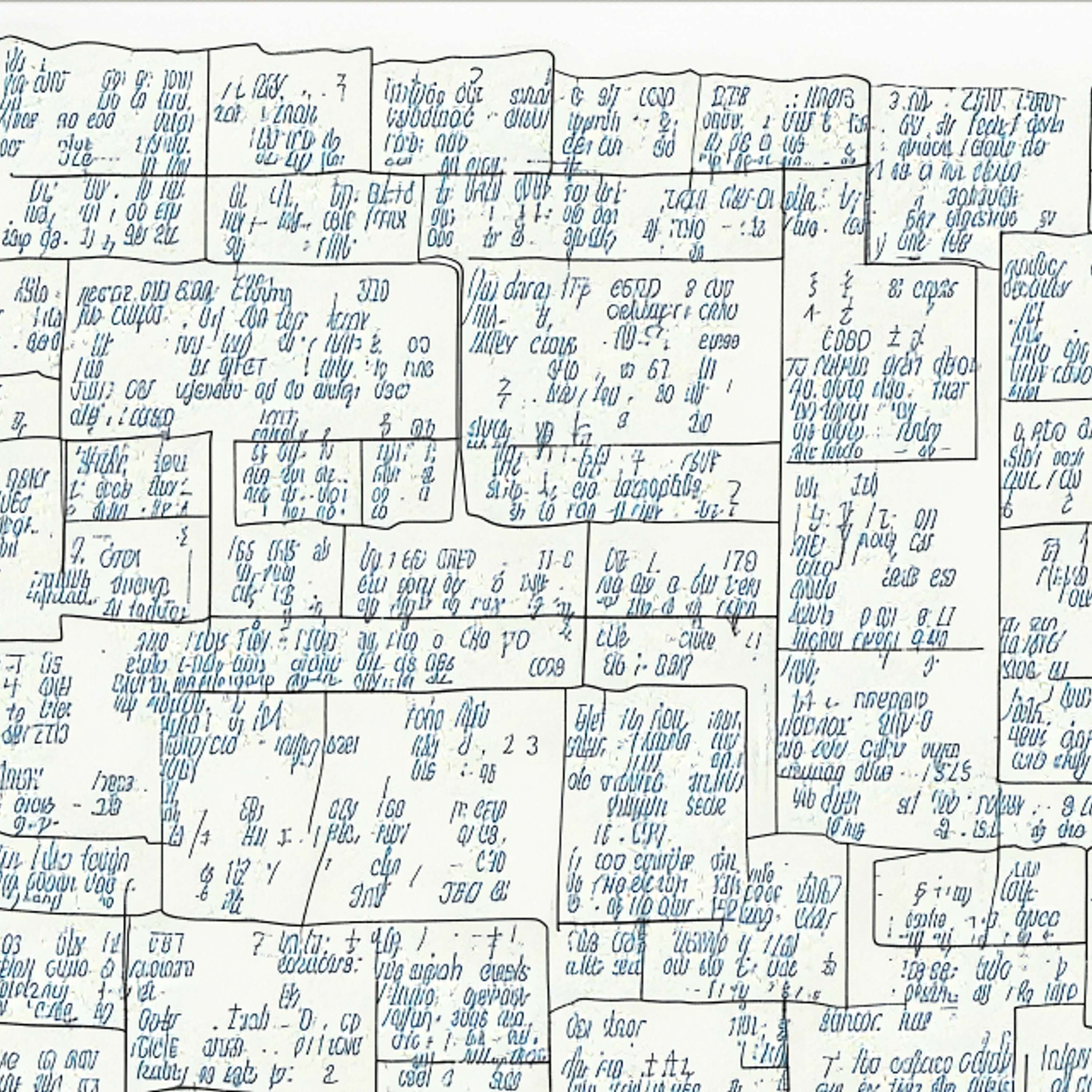 Tech Stories Tech Brief By HackerNoonDiscrete Mean Estimates and the Landau-Siegel Zero: Appendix A. Some Euler Products
This story was originally published on HackerNoon at: https://hackernoon.com/discrete-mean-estimates-and-the-landau-siegel-zero-appendix-a-some-euler-products.
Dive into Appendix A, where we prove Lemmas 8.3, 15.2, 15.3, 16.1, and 16.2 regarding Euler products with detailed mathematical analysis and sketches.
Check more stories related to tech-stories at: https://hackernoon.com/c/tech-stories.
You can also check exclusive content about #analytic-number-theory, #mathematical-sciences, #distribution-of-zeros, #siegel's-theorem, #dirichlet-l-functions, #primitive-character-modulus, #landau-siegel-zero, #zeta-function, and more.
This story was written by: @eigenvalue. Learn more about this writer by checking @eigenvalue's about page,
and for more stories, please visit hackernoon.com.
Appendix A delves into proving Lemmas 8.3, 15.2, 15.3, 16.1, and 16.2 concerning Euler products...2024-06-0502 min
Tech Stories Tech Brief By HackerNoonDiscrete Mean Estimates and the Landau-Siegel Zero: Appendix A. Some Euler Products
This story was originally published on HackerNoon at: https://hackernoon.com/discrete-mean-estimates-and-the-landau-siegel-zero-appendix-a-some-euler-products.
Dive into Appendix A, where we prove Lemmas 8.3, 15.2, 15.3, 16.1, and 16.2 regarding Euler products with detailed mathematical analysis and sketches.
Check more stories related to tech-stories at: https://hackernoon.com/c/tech-stories.
You can also check exclusive content about #analytic-number-theory, #mathematical-sciences, #distribution-of-zeros, #siegel's-theorem, #dirichlet-l-functions, #primitive-character-modulus, #landau-siegel-zero, #zeta-function, and more.
This story was written by: @eigenvalue. Learn more about this writer by checking @eigenvalue's about page,
and for more stories, please visit hackernoon.com.
Appendix A delves into proving Lemmas 8.3, 15.2, 15.3, 16.1, and 16.2 concerning Euler products...2024-06-0502 min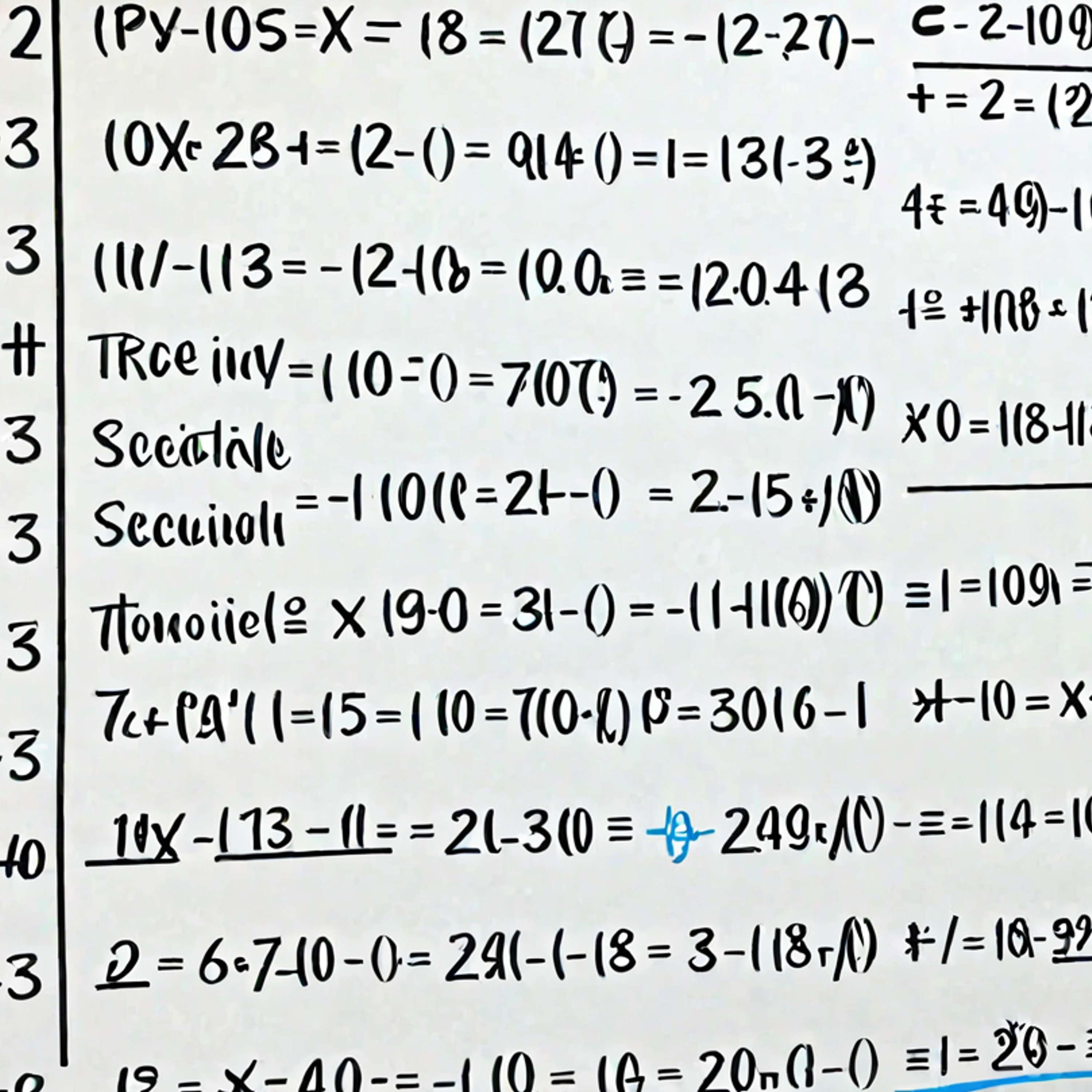 Tech Stories Tech Brief By HackerNoonMathematical Proofs for Evaluating Φ2
This story was originally published on HackerNoon at: https://hackernoon.com/mathematical-proofs-for-evaluating-f2.
Dive into the evaluation of Φ2 with a thorough analysis using advanced lemmas, contour integration, and direct calculations.
Check more stories related to tech-stories at: https://hackernoon.com/c/tech-stories.
You can also check exclusive content about #mathematical-sciences, #analytic-number-theory, #distribution-of-zeros, #siegel's-theorem, #dirichlet-l-functions, #primitive-character-modulus, #landau-siegel-zero, #zeta-function, and more.
This story was written by: @eigenvalue. Learn more about this writer by checking @eigenvalue's about page,
and for more stories, please visit hackernoon.com.
The evaluation of Φ2 involves advanced mathematical proofs, leveraging lemmas and contour in...2024-06-0402 min
Tech Stories Tech Brief By HackerNoonMathematical Proofs for Evaluating Φ2
This story was originally published on HackerNoon at: https://hackernoon.com/mathematical-proofs-for-evaluating-f2.
Dive into the evaluation of Φ2 with a thorough analysis using advanced lemmas, contour integration, and direct calculations.
Check more stories related to tech-stories at: https://hackernoon.com/c/tech-stories.
You can also check exclusive content about #mathematical-sciences, #analytic-number-theory, #distribution-of-zeros, #siegel's-theorem, #dirichlet-l-functions, #primitive-character-modulus, #landau-siegel-zero, #zeta-function, and more.
This story was written by: @eigenvalue. Learn more about this writer by checking @eigenvalue's about page,
and for more stories, please visit hackernoon.com.
The evaluation of Φ2 involves advanced mathematical proofs, leveraging lemmas and contour in...2024-06-0402 min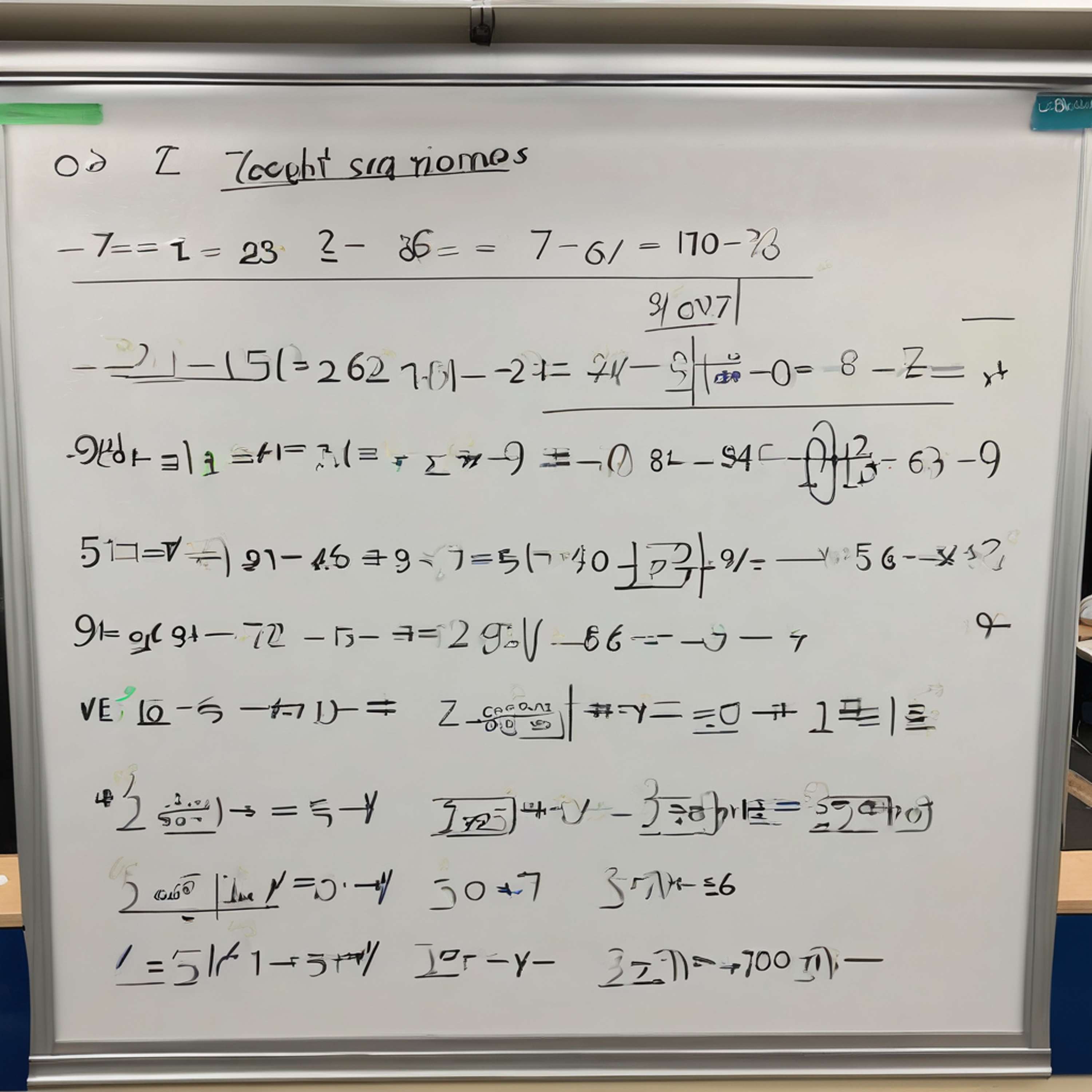 Tech Stories Tech Brief By HackerNoonEvaluating Φ1: Integrating Lemmas, Propositions, and Mellin Transforms
This story was originally published on HackerNoon at: https://hackernoon.com/evaluating-f1-integrating-lemmas-propositions-and-mellin-transforms.
Explore the detailed evaluation of Φ1, incorporating key lemmas, propositions, and advanced mathematical techniques for comprehensive understanding.
Check more stories related to tech-stories at: https://hackernoon.com/c/tech-stories.
You can also check exclusive content about #mathematical-sciences, #analytic-number-theory, #distribution-of-zeros, #siegel's-theorem, #dirichlet-l-functions, #primitive-character-modulus, #landau-siegel-zero, #zeta-function, and more.
This story was written by: @eigenvalue. Learn more about this writer by checking @eigenvalue's about page,
and for more stories, please visit hackernoon.com.
The evaluation of Φ1 involves advanced mathematical techniques, including Mellin transforms and ke...2024-06-0303 min
Tech Stories Tech Brief By HackerNoonEvaluating Φ1: Integrating Lemmas, Propositions, and Mellin Transforms
This story was originally published on HackerNoon at: https://hackernoon.com/evaluating-f1-integrating-lemmas-propositions-and-mellin-transforms.
Explore the detailed evaluation of Φ1, incorporating key lemmas, propositions, and advanced mathematical techniques for comprehensive understanding.
Check more stories related to tech-stories at: https://hackernoon.com/c/tech-stories.
You can also check exclusive content about #mathematical-sciences, #analytic-number-theory, #distribution-of-zeros, #siegel's-theorem, #dirichlet-l-functions, #primitive-character-modulus, #landau-siegel-zero, #zeta-function, and more.
This story was written by: @eigenvalue. Learn more about this writer by checking @eigenvalue's about page,
and for more stories, please visit hackernoon.com.
The evaluation of Φ1 involves advanced mathematical techniques, including Mellin transforms and ke...2024-06-0303 min Tech Stories Tech Brief By HackerNoonUnderstanding the Mean-Value Formula II with Primitive Characters
This story was originally published on HackerNoon at: https://hackernoon.com/understanding-the-mean-value-formula-ii-with-primitive-characters.
Explore Mean-Value Formula II, focusing on proving Proposition 14.1 and understanding primitive characters and complex number sequences.
Check more stories related to tech-stories at: https://hackernoon.com/c/tech-stories.
You can also check exclusive content about #mathematical-sciences, #analytic-number-theory, #distribution-of-zeros, #siegel's-theorem, #dirichlet-l-functions, #primitive-character-modulus, #landau-siegel-zero, #zeta-function, and more.
This story was written by: @eigenvalue. Learn more about this writer by checking @eigenvalue's about page,
and for more stories, please visit hackernoon.com.
Mean-Value Formula II involves proving Proposition 14.1, using primitive characters and sequences of...2024-06-0301 min
Tech Stories Tech Brief By HackerNoonUnderstanding the Mean-Value Formula II with Primitive Characters
This story was originally published on HackerNoon at: https://hackernoon.com/understanding-the-mean-value-formula-ii-with-primitive-characters.
Explore Mean-Value Formula II, focusing on proving Proposition 14.1 and understanding primitive characters and complex number sequences.
Check more stories related to tech-stories at: https://hackernoon.com/c/tech-stories.
You can also check exclusive content about #mathematical-sciences, #analytic-number-theory, #distribution-of-zeros, #siegel's-theorem, #dirichlet-l-functions, #primitive-character-modulus, #landau-siegel-zero, #zeta-function, and more.
This story was written by: @eigenvalue. Learn more about this writer by checking @eigenvalue's about page,
and for more stories, please visit hackernoon.com.
Mean-Value Formula II involves proving Proposition 14.1, using primitive characters and sequences of...2024-06-0301 min TechcraftingAI RoboticsEp. 121 - February 23, 2024arXiv Robotics research summaries for February 23, 2024.
Today's Research Themes (AI-Generated):
• A digital twinning platform integrates indoor sensing, communications, and robotics for enhanced environment adaptation.
• Safety assessment in underactuated aerial vehicles is improved for diverse oriented surface interactions during industrial tasks.
• Novel neural implicit swept volume models enable faster and more accurate collision detection in robotic motion planning.
• Streaming Gaussian Dirichlet Random Fields provide efficient spatial predictions for high-dimensional categorical observations.
• A self-supervised traversal estimation approach leverages geometric and visual cues for robust off-road vehicle navigation2024-02-2615 min
TechcraftingAI RoboticsEp. 121 - February 23, 2024arXiv Robotics research summaries for February 23, 2024.
Today's Research Themes (AI-Generated):
• A digital twinning platform integrates indoor sensing, communications, and robotics for enhanced environment adaptation.
• Safety assessment in underactuated aerial vehicles is improved for diverse oriented surface interactions during industrial tasks.
• Novel neural implicit swept volume models enable faster and more accurate collision detection in robotic motion planning.
• Streaming Gaussian Dirichlet Random Fields provide efficient spatial predictions for high-dimensional categorical observations.
• A self-supervised traversal estimation approach leverages geometric and visual cues for robust off-road vehicle navigation2024-02-2615 min The Local Maximum with Max SklarEp. 265 - The Multi-Armed BanditMax talks about the multi-armed bandit - an important concept in the Data Science world. The news of the day is Microsoft's plan to integrate generative text (from open AI) into it's Bing search engine, and whether Google can turn around from negative news stories and compete with this.Probability Distribution of the Week: Dirichlet Distributionlocalmaxradio.com/265 Get full access to The Local Maximum at localmaximum.substack.com/subscribe2023-02-1439 min
The Local Maximum with Max SklarEp. 265 - The Multi-Armed BanditMax talks about the multi-armed bandit - an important concept in the Data Science world. The news of the day is Microsoft's plan to integrate generative text (from open AI) into it's Bing search engine, and whether Google can turn around from negative news stories and compete with this.Probability Distribution of the Week: Dirichlet Distributionlocalmaxradio.com/265 Get full access to The Local Maximum at localmaximum.substack.com/subscribe2023-02-1439 min TapirCast#154. Mühendislik Kavramları: Haberleşme Kuramı, Fourier Serileri ve Fourier Dönüşümü - 02/07/2022Doç. Dr. Serhan Yarkan ve Halil Said Cankurtaran'ın yer aldığı Mühendislik Kavramları serisinin Haberleşme Kuramı odaklı bu bölümünde, Fourier serileri ve Fourier dönüşümünü ele alınmıştır. Haberleşme Kuramı içerisinde sürekli olarak kullandığımız araçlardan biri olan Fourier serileri ve Fourier dönüşümünü ele aldığımız bu bölümümüzde öncelikle bir işaretin Fourier serilerine açılabilmesi ya da bir işaretin Fourier dönüşümünün alınabilmesi için gerekli olan şartlara değinilmiştir. Sonrasında ise rastgele işaretlerin Fourier dönüşümü üzerine k...2022-07-0321 min
TapirCast#154. Mühendislik Kavramları: Haberleşme Kuramı, Fourier Serileri ve Fourier Dönüşümü - 02/07/2022Doç. Dr. Serhan Yarkan ve Halil Said Cankurtaran'ın yer aldığı Mühendislik Kavramları serisinin Haberleşme Kuramı odaklı bu bölümünde, Fourier serileri ve Fourier dönüşümünü ele alınmıştır. Haberleşme Kuramı içerisinde sürekli olarak kullandığımız araçlardan biri olan Fourier serileri ve Fourier dönüşümünü ele aldığımız bu bölümümüzde öncelikle bir işaretin Fourier serilerine açılabilmesi ya da bir işaretin Fourier dönüşümünün alınabilmesi için gerekli olan şartlara değinilmiştir. Sonrasında ise rastgele işaretlerin Fourier dönüşümü üzerine k...2022-07-0321 min GALACTIC PROGENYPH10 59X. ZERO DARK THIRTYZERO DARK THIRTY
“But at midnight there was a shout, ‘Look, the bridegroom is here! Come out to meet him.’”
Matthew 25:6 NET
The day December 30, 2021 12:30 the 2nd Exodus Began
Nightfall Micah
“As for you, Bethlehem Ephrathah, seemingly insignificant among the clans of Judah – from you a king will emerge who will rule over Israel on my behalf, one whose origins are in the distant past. So the Lord will hand the people of Israel over to their enemies until the time when the woman in labor gives birth. Then the rest of the king’s countrymen will return to be reunited with the people of Is...2022-01-081h 01
GALACTIC PROGENYPH10 59X. ZERO DARK THIRTYZERO DARK THIRTY
“But at midnight there was a shout, ‘Look, the bridegroom is here! Come out to meet him.’”
Matthew 25:6 NET
The day December 30, 2021 12:30 the 2nd Exodus Began
Nightfall Micah
“As for you, Bethlehem Ephrathah, seemingly insignificant among the clans of Judah – from you a king will emerge who will rule over Israel on my behalf, one whose origins are in the distant past. So the Lord will hand the people of Israel over to their enemies until the time when the woman in labor gives birth. Then the rest of the king’s countrymen will return to be reunited with the people of Is...2022-01-081h 01 Teachers in the DungeonEpisode 5: Random Encounters 1: Rix and DirichletTom and Dan pause their storytelling to interview two of the players who experienced Telessaria: Chris Metz, creator of Rix the tiefling sorcerer, and Marc Kugler, creator of Dirichlet the wood elf ranger. The players give a glimpse into the thought processes on the other side of the DM screen and raise their own questions about future adventures.2021-09-0727 min
Teachers in the DungeonEpisode 5: Random Encounters 1: Rix and DirichletTom and Dan pause their storytelling to interview two of the players who experienced Telessaria: Chris Metz, creator of Rix the tiefling sorcerer, and Marc Kugler, creator of Dirichlet the wood elf ranger. The players give a glimpse into the thought processes on the other side of the DM screen and raise their own questions about future adventures.2021-09-0727 min Estatística com HPrincípio da Casa de PombosEntenda o Princípio da Casa de Pombos, realizado pelo matemático alemão Johann Dirichlet e sua aplicação prática.2021-08-1304 min
Estatística com HPrincípio da Casa de PombosEntenda o Princípio da Casa de Pombos, realizado pelo matemático alemão Johann Dirichlet e sua aplicação prática.2021-08-1304 min Learning Bayesian StatisticsBayesian Non-Parametrics & Developing Turing.jl, with Martin TrappEpisode sponsored by Tidelift: tidelift.comI bet you already heard of Bayesian nonparametric models, at least on this very podcast. We already talked about Dirichlet Processes with Karin Knudson on episode 4, and then about Gaussian Processes with Elizaveta Semenova on episode 21. Now we’re gonna dive into the mathematical properties of these objects, to understand them better — because, as you may know, Bayesian nonparametrics are quite powerful but also very hard to fit!Along the way, you’ll learn about probabilistic circuits, sum-product networks and — what a delight — you’ll hear from the Julia community! I...2021-03-301h 09
Learning Bayesian StatisticsBayesian Non-Parametrics & Developing Turing.jl, with Martin TrappEpisode sponsored by Tidelift: tidelift.comI bet you already heard of Bayesian nonparametric models, at least on this very podcast. We already talked about Dirichlet Processes with Karin Knudson on episode 4, and then about Gaussian Processes with Elizaveta Semenova on episode 21. Now we’re gonna dive into the mathematical properties of these objects, to understand them better — because, as you may know, Bayesian nonparametrics are quite powerful but also very hard to fit!Along the way, you’ll learn about probabilistic circuits, sum-product networks and — what a delight — you’ll hear from the Julia community! I...2021-03-301h 09 Learning Bayesian StatisticsBayesian Non-Parametrics & Developing Turing.jl, with Martin TrappEpisode sponsored by Tidelift: tidelift.comI bet you already heard of Bayesian nonparametric models, at least on this very podcast. We already talked about Dirichlet Processes with Karin Knudson on episode 4, and then about Gaussian Processes with Elizaveta Semenova on episode 21. Now we’re gonna dive into the mathematical properties of these objects, to understand them better — because, as you may know, Bayesian nonparametrics are quite powerful but also very hard to fit!Along the way, you’ll learn about probabilistic circuits, sum-product networks and — what a delight — you’ll hear from the Julia community! I...2021-03-301h 09
Learning Bayesian StatisticsBayesian Non-Parametrics & Developing Turing.jl, with Martin TrappEpisode sponsored by Tidelift: tidelift.comI bet you already heard of Bayesian nonparametric models, at least on this very podcast. We already talked about Dirichlet Processes with Karin Knudson on episode 4, and then about Gaussian Processes with Elizaveta Semenova on episode 21. Now we’re gonna dive into the mathematical properties of these objects, to understand them better — because, as you may know, Bayesian nonparametrics are quite powerful but also very hard to fit!Along the way, you’ll learn about probabilistic circuits, sum-product networks and — what a delight — you’ll hear from the Julia community! I...2021-03-301h 09 Podcast Bebas Linear#39: The Youngster (not) From RichelettePada episode ini kami membahas tentang Peter Gustav Lejeune Dirichlet yang meskipun nama belakangnya secara harfiah berarti "Anak muda dari Richelette" tapi tidak lahir dan besar di Richelette... loh kok?2020-11-271h 01
Podcast Bebas Linear#39: The Youngster (not) From RichelettePada episode ini kami membahas tentang Peter Gustav Lejeune Dirichlet yang meskipun nama belakangnya secara harfiah berarti "Anak muda dari Richelette" tapi tidak lahir dan besar di Richelette... loh kok?2020-11-271h 01 IDA IdeasWeaponized Tweets: Artificial Intelligence to Defend Against Influence Operations in Social MediaIDA Ideas host Rhett Moeller spoke to researchers from the Science and Technology Division of IDA’s Systems and Analyses Center about their use of machine learning to create a prototype system for analyzing Twitter posts that U.S. adversaries made to influence public opinion in the years leading up to the 2016 U.S. Presidential election. Joining him are Shelley Cazares, who leads the ongoing project, and two members of her team, Emily Parrish and Jenny Holzer.
The project began in 2018 with about three million tweets from early 2012 through early 2018 that had been posted by the Russian-backed In...2020-10-2038 min
IDA IdeasWeaponized Tweets: Artificial Intelligence to Defend Against Influence Operations in Social MediaIDA Ideas host Rhett Moeller spoke to researchers from the Science and Technology Division of IDA’s Systems and Analyses Center about their use of machine learning to create a prototype system for analyzing Twitter posts that U.S. adversaries made to influence public opinion in the years leading up to the 2016 U.S. Presidential election. Joining him are Shelley Cazares, who leads the ongoing project, and two members of her team, Emily Parrish and Jenny Holzer.
The project began in 2018 with about three million tweets from early 2012 through early 2018 that had been posted by the Russian-backed In...2020-10-2038 min My Favorite TheoremEpisode 59 - Daniel Litt
Kevin Knudson: Welcome to My Favorite Theorem, a math podcast and so much more. I'm Kevin Knudson, professor of mathematics at the University of Florida. Here is your other host.
Evelyn Lamb: Hi, I'm Evelyn Lamb. I'm a math and science writer in Salt Lake City, Utah. I have left the county two times since this all happened. We don't have a car, so when I leave my home, it is either on feet or bicycle, which is your feet moving in a different way. But I have biked out of our county...2020-10-0826 min
My Favorite TheoremEpisode 59 - Daniel Litt
Kevin Knudson: Welcome to My Favorite Theorem, a math podcast and so much more. I'm Kevin Knudson, professor of mathematics at the University of Florida. Here is your other host.
Evelyn Lamb: Hi, I'm Evelyn Lamb. I'm a math and science writer in Salt Lake City, Utah. I have left the county two times since this all happened. We don't have a car, so when I leave my home, it is either on feet or bicycle, which is your feet moving in a different way. But I have biked out of our county...2020-10-0826 min EinmadDirichlet.MP3Dirichlet.MP3 by Einmad2020-05-1303 min
EinmadDirichlet.MP3Dirichlet.MP3 by Einmad2020-05-1303 min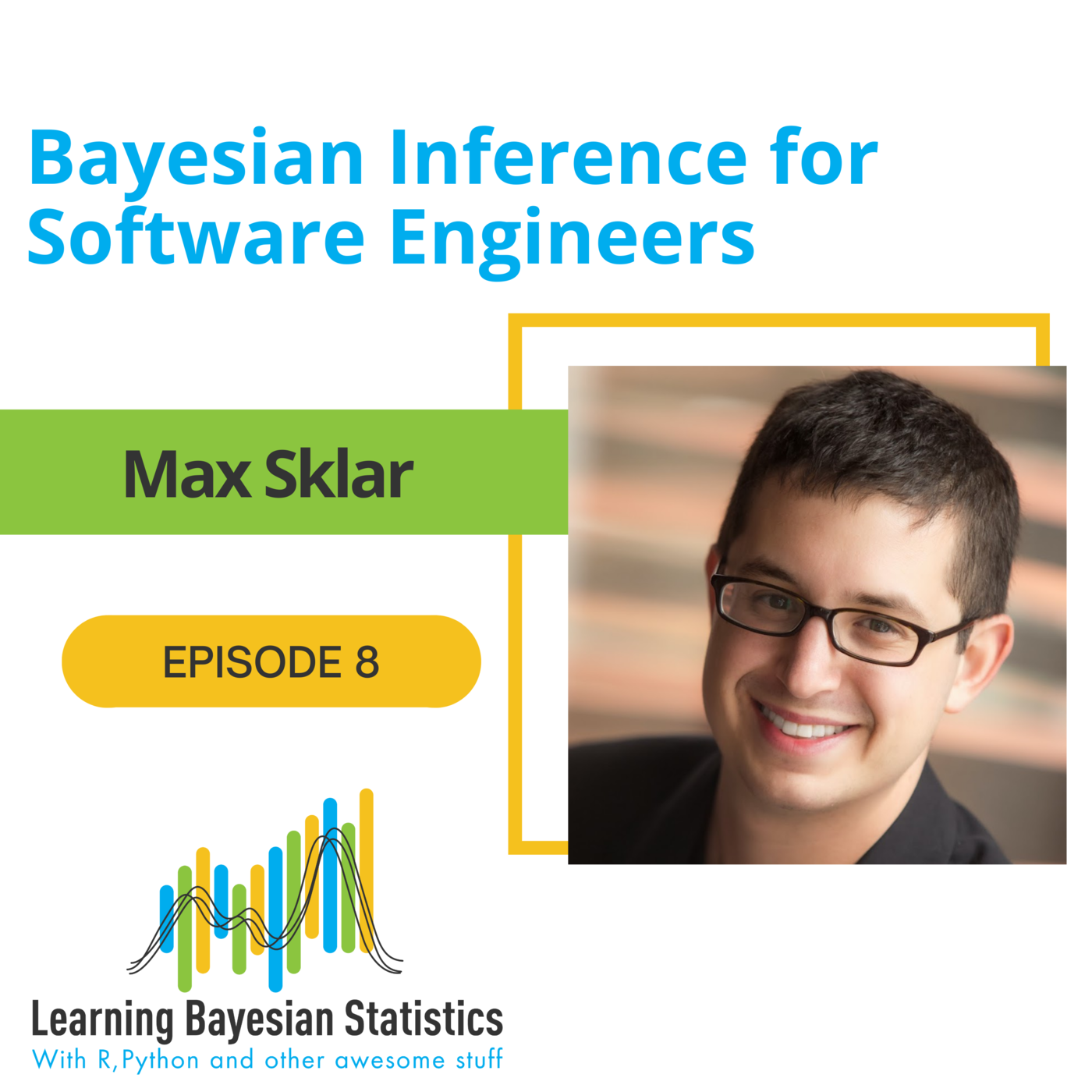 Learning Bayesian Statistics#8 Bayesian Inference for Software Engineers, with Max SklarWhat is it like using Bayesian tools when you’re a software engineer or computer scientist? How do you apply these tools in the online ad industry? More generally, what is Bayesian thinking, philosophically? And is it really useful in every day life? Because, well you can’t fire up MCMC each time you need to make a quick decision under uncertainty… So how do you do that in practice, when you have at most a pen and paper?In this episode, you’ll hear Max Sklar’s take on these questions. Max is a software en...2020-01-2948 min
Learning Bayesian Statistics#8 Bayesian Inference for Software Engineers, with Max SklarWhat is it like using Bayesian tools when you’re a software engineer or computer scientist? How do you apply these tools in the online ad industry? More generally, what is Bayesian thinking, philosophically? And is it really useful in every day life? Because, well you can’t fire up MCMC each time you need to make a quick decision under uncertainty… So how do you do that in practice, when you have at most a pen and paper?In this episode, you’ll hear Max Sklar’s take on these questions. Max is a software en...2020-01-2948 min Learning Bayesian Statistics#8 Bayesian Inference for Software Engineers, with Max SklarWhat is it like using Bayesian tools when you’re a software engineer or computer scientist? How do you apply these tools in the online ad industry? More generally, what is Bayesian thinking, philosophically? And is it really useful in every day life? Because, well you can’t fire up MCMC each time you need to make a quick decision under uncertainty… So how do you do that in practice, when you have at most a pen and paper?In this episode, you’ll hear Max Sklar’s take on these questions. Max is a software en...2020-01-2948 min
Learning Bayesian Statistics#8 Bayesian Inference for Software Engineers, with Max SklarWhat is it like using Bayesian tools when you’re a software engineer or computer scientist? How do you apply these tools in the online ad industry? More generally, what is Bayesian thinking, philosophically? And is it really useful in every day life? Because, well you can’t fire up MCMC each time you need to make a quick decision under uncertainty… So how do you do that in practice, when you have at most a pen and paper?In this episode, you’ll hear Max Sklar’s take on these questions. Max is a software en...2020-01-2948 min Learning Bayesian Statistics#4 Dirichlet Processes and Neurodegenerative Diseases, with Karin KnudsonWhat do neurodegenerative diseases, gerrymandering and ecological inference all have in common? Well, they can all be studied with Bayesian methods — and that’s exactly what Karin Knudson is doing.In this episode, Karin will share with us the vital and essential work she does to understand aspects of neurodegenerative diseases. She’ll also tell us more about computational neuroscience and Dirichlet processes — what they are, what they do, and when you should use them.Karin did her doctorate in mathematics, with a focus on compressive sensing and computational neuroscience at the University of Texas at Austi...2019-12-0449 min
Learning Bayesian Statistics#4 Dirichlet Processes and Neurodegenerative Diseases, with Karin KnudsonWhat do neurodegenerative diseases, gerrymandering and ecological inference all have in common? Well, they can all be studied with Bayesian methods — and that’s exactly what Karin Knudson is doing.In this episode, Karin will share with us the vital and essential work she does to understand aspects of neurodegenerative diseases. She’ll also tell us more about computational neuroscience and Dirichlet processes — what they are, what they do, and when you should use them.Karin did her doctorate in mathematics, with a focus on compressive sensing and computational neuroscience at the University of Texas at Austi...2019-12-0449 min Learning Bayesian Statistics#4 Dirichlet Processes and Neurodegenerative Diseases, with Karin KnudsonWhat do neurodegenerative diseases, gerrymandering and ecological inference all have in common? Well, they can all be studied with Bayesian methods — and that’s exactly what Karin Knudson is doing.In this episode, Karin will share with us the vital and essential work she does to understand aspects of neurodegenerative diseases. She’ll also tell us more about computational neuroscience and Dirichlet processes — what they are, what they do, and when you should use them.Karin did her doctorate in mathematics, with a focus on compressive sensing and computational neuroscience at the University of Texas at Austi...2019-12-0449 min
Learning Bayesian Statistics#4 Dirichlet Processes and Neurodegenerative Diseases, with Karin KnudsonWhat do neurodegenerative diseases, gerrymandering and ecological inference all have in common? Well, they can all be studied with Bayesian methods — and that’s exactly what Karin Knudson is doing.In this episode, Karin will share with us the vital and essential work she does to understand aspects of neurodegenerative diseases. She’ll also tell us more about computational neuroscience and Dirichlet processes — what they are, what they do, and when you should use them.Karin did her doctorate in mathematics, with a focus on compressive sensing and computational neuroscience at the University of Texas at Austi...2019-12-0449 min Politics Over CoffeeBONUS CONTENT - Patreon - Analysis of the Democratic PrimariesIn this bonus upload usually only available for Patreon subscribers, Gareth and Olly chat about the Democratic Primaries, the difference between the likability and electability of a candidate and exactly what is a Bayesian Dynamic Dirichlet Regression?
Whilst getting exclusive stupid political news segments, rants, updates on old segments and (starting very soon) a monthly blog; those on Patreon also get bonus content from time to time. This is one of those moments. Patreon subscribers will be getting show notes that expand upon what Gareth and Olly discuss.
To find out more about Patreon, click the link below.
www.patreon...2019-09-2700 min
Politics Over CoffeeBONUS CONTENT - Patreon - Analysis of the Democratic PrimariesIn this bonus upload usually only available for Patreon subscribers, Gareth and Olly chat about the Democratic Primaries, the difference between the likability and electability of a candidate and exactly what is a Bayesian Dynamic Dirichlet Regression?
Whilst getting exclusive stupid political news segments, rants, updates on old segments and (starting very soon) a monthly blog; those on Patreon also get bonus content from time to time. This is one of those moments. Patreon subscribers will be getting show notes that expand upon what Gareth and Olly discuss.
To find out more about Patreon, click the link below.
www.patreon...2019-09-2700 min The TWIML AI Podcast (formerly This Week in Machine Learning & Artificial Intelligence)Topic Modeling for Customer Insights at USAA with William FehlmanToday we’re joined by William Fehlman, director of data science at USAA, to discuss:
• His work on topic modeling, which USAA uses in various scenarios, including member chat channels.
• How their datasets are generated.
• Explored methodologies of topic modeling, including latent semantic indexing, latent Dirichlet allocation, and non-negative matrix factorization.
• We also explore how terms are represented via a document-term matrix, and how they are scored based on coherence.
2019-06-2044 min
The TWIML AI Podcast (formerly This Week in Machine Learning & Artificial Intelligence)Topic Modeling for Customer Insights at USAA with William FehlmanToday we’re joined by William Fehlman, director of data science at USAA, to discuss:
• His work on topic modeling, which USAA uses in various scenarios, including member chat channels.
• How their datasets are generated.
• Explored methodologies of topic modeling, including latent semantic indexing, latent Dirichlet allocation, and non-negative matrix factorization.
• We also explore how terms are represented via a document-term matrix, and how they are scored based on coherence.
2019-06-2044 min Parallel PassionDon Goodman-WilsonShow Notes
Microsoft to acquire GitHub
I’m Nat Friedman, future CEO of GitHub. AMA.
ScreenHero joins Slack
Zoom
Magic: The Gathering
magique - A tool that applies genetic algorithms to building Magic: The Gathering decks.
Latent Dirichlet allocation
MarI/O - Machine Learning for Video Games
Swackett
Boodler: a programmable soundscape tool
Corelation does not imply causation
A Guide to the Good Life: The Ancient Art of Stoic Joy
Recommendations
Short stories by Jorge Luis Borges
The City & The City
The Good Place
Don Goodman-Wilson
Twitter
GitHub
Personal Page
Parallel Passion
Pa...2018-07-191h 03
Parallel PassionDon Goodman-WilsonShow Notes
Microsoft to acquire GitHub
I’m Nat Friedman, future CEO of GitHub. AMA.
ScreenHero joins Slack
Zoom
Magic: The Gathering
magique - A tool that applies genetic algorithms to building Magic: The Gathering decks.
Latent Dirichlet allocation
MarI/O - Machine Learning for Video Games
Swackett
Boodler: a programmable soundscape tool
Corelation does not imply causation
A Guide to the Good Life: The Ancient Art of Stoic Joy
Recommendations
Short stories by Jorge Luis Borges
The City & The City
The Good Place
Don Goodman-Wilson
Twitter
GitHub
Personal Page
Parallel Passion
Pa...2018-07-191h 03 Siraj RavalGenerative Models - The Math of Intelligence #8Generative Models are insanely cool! They help create never before seen data. We'll go over the mathematical difference between discriminative and generative models, talk about a few types, then dive into a basic one called Latent Dirichlet Allocation to generate a set of topics for some news articles.
Code for this video:
https://github.com/llSourcell/Latent_Dirichlet_Allocation
Hammad's Winning Code:
https://github.com/hammadshaikhha/Math-of-Machine-Learning-Course-by-Siraj/tree/master/Bayesian%20Linear%20Regression
Noah's Runner up code:
https://github.com/NoahLidell/math-of-intelligence/tree/master/hyperparameter_optimization
Carykh's channel:
https://www.youtube.com/user/carykh
More learning resources:
https://www.youtube.com...2017-08-0409 min
Siraj RavalGenerative Models - The Math of Intelligence #8Generative Models are insanely cool! They help create never before seen data. We'll go over the mathematical difference between discriminative and generative models, talk about a few types, then dive into a basic one called Latent Dirichlet Allocation to generate a set of topics for some news articles.
Code for this video:
https://github.com/llSourcell/Latent_Dirichlet_Allocation
Hammad's Winning Code:
https://github.com/hammadshaikhha/Math-of-Machine-Learning-Course-by-Siraj/tree/master/Bayesian%20Linear%20Regression
Noah's Runner up code:
https://github.com/NoahLidell/math-of-intelligence/tree/master/hyperparameter_optimization
Carykh's channel:
https://www.youtube.com/user/carykh
More learning resources:
https://www.youtube.com...2017-08-0409 min Machine Learning GuideMLG 019 Natural Language Processing 2 Try a walking desk to stay healthy while you study or work! Notes and resources at ocdevel.com/mlg/19 Classical NLP Techniques: Origins and Phases in NLP History: Initially reliant on hardcoded linguistic rules, NLP's evolution significantly pivoted with the introduction of machine learning, particularly shallow learning algorithms, leading eventually to deep learning, which is the current standard. Importance of Classical Methods: Knowing traditional methods is still valuable, providing a historical context and foundation for understanding NLP tasks. Traditional methods can be advantageous with small datasets or limited compute power. ...2017-07-111h 05
Machine Learning GuideMLG 019 Natural Language Processing 2 Try a walking desk to stay healthy while you study or work! Notes and resources at ocdevel.com/mlg/19 Classical NLP Techniques: Origins and Phases in NLP History: Initially reliant on hardcoded linguistic rules, NLP's evolution significantly pivoted with the introduction of machine learning, particularly shallow learning algorithms, leading eventually to deep learning, which is the current standard. Importance of Classical Methods: Knowing traditional methods is still valuable, providing a historical context and foundation for understanding NLP tasks. Traditional methods can be advantageous with small datasets or limited compute power. ...2017-07-111h 05 Wahrscheinlichkeitstheorie, SS2016, Vorlesung02: Wahrscheinlichkeitstheorie, Vorlesung, SS 2016, am 20.04.201602 |
0:00:00 Starten
0:00:10 Englische Zusammenfassung der neuen Begriffe von Lektion 1
0:02:15 Bemerkungen zum Satz von Radon-Nikodym
0:09:25 Singularität von Maßen
0:12:23 Beispiel: Gleichverteilung auf einem Kreisrand
0:15:46 Lebesgue-Zerlegung
0:24:36 Singularität und absolute Stetigkeit beüglich des Borel-Lebesgue-Maßes
0:32:31 Lebesgue-Punkt, Lebesguescher Dichtesatz
0:34:41 Transformationssatz für Lebesgue-Dichten
0:37:11 Lemma von Schreffé
0:46:30 Produkt-Maß
0:49:03 Sätze von Tonelli und Fubini
0:52:15 Integral von Dirichlet
0:59:07 Darstellungsformel für den Erwartungswert
1:08:28 Lebesgue-Stieltjes-Integral
1:12:03 Partielle Integration beim Lebesgue-Stieltjes-Integral
1:22:10 Wichtige Ungleichungen2016-05-021h 26
Wahrscheinlichkeitstheorie, SS2016, Vorlesung02: Wahrscheinlichkeitstheorie, Vorlesung, SS 2016, am 20.04.201602 |
0:00:00 Starten
0:00:10 Englische Zusammenfassung der neuen Begriffe von Lektion 1
0:02:15 Bemerkungen zum Satz von Radon-Nikodym
0:09:25 Singularität von Maßen
0:12:23 Beispiel: Gleichverteilung auf einem Kreisrand
0:15:46 Lebesgue-Zerlegung
0:24:36 Singularität und absolute Stetigkeit beüglich des Borel-Lebesgue-Maßes
0:32:31 Lebesgue-Punkt, Lebesguescher Dichtesatz
0:34:41 Transformationssatz für Lebesgue-Dichten
0:37:11 Lemma von Schreffé
0:46:30 Produkt-Maß
0:49:03 Sätze von Tonelli und Fubini
0:52:15 Integral von Dirichlet
0:59:07 Darstellungsformel für den Erwartungswert
1:08:28 Lebesgue-Stieltjes-Integral
1:12:03 Partielle Integration beim Lebesgue-Stieltjes-Integral
1:22:10 Wichtige Ungleichungen2016-05-021h 26 ModellansatzDynamische RandbedingungenDavid Hipp hat am Projekt Cooking Math mitgearbeitet. In seinem darin vorgestellten Forschungsprojekt betrachtet er eine relativ einfache Form der Wellengleichung, die jedoch gut für die Beschreibung von akustischen Wellen geeignet ist. Die Gleichung beschreibt die Wellenausbreitung im Raum mit Hilfe einer partiellen Differentialgleichung. Die Lösung der Wellengleichung ist eine Funktion deren Variablen die Zeit und der Ort sind. Konkret werden in der Gleichung zeitliche und räumliche Änderungen des Zustands, also der Funktion, in Beziehung gesetzt, um die Wellenausbreitung zu beschreiben. Das mathematische Modell für Wellenausbreitung in beschränkten Gebieten umfasst neben der partie...2016-03-0341 min
ModellansatzDynamische RandbedingungenDavid Hipp hat am Projekt Cooking Math mitgearbeitet. In seinem darin vorgestellten Forschungsprojekt betrachtet er eine relativ einfache Form der Wellengleichung, die jedoch gut für die Beschreibung von akustischen Wellen geeignet ist. Die Gleichung beschreibt die Wellenausbreitung im Raum mit Hilfe einer partiellen Differentialgleichung. Die Lösung der Wellengleichung ist eine Funktion deren Variablen die Zeit und der Ort sind. Konkret werden in der Gleichung zeitliche und räumliche Änderungen des Zustands, also der Funktion, in Beziehung gesetzt, um die Wellenausbreitung zu beschreiben. Das mathematische Modell für Wellenausbreitung in beschränkten Gebieten umfasst neben der partie...2016-03-0341 min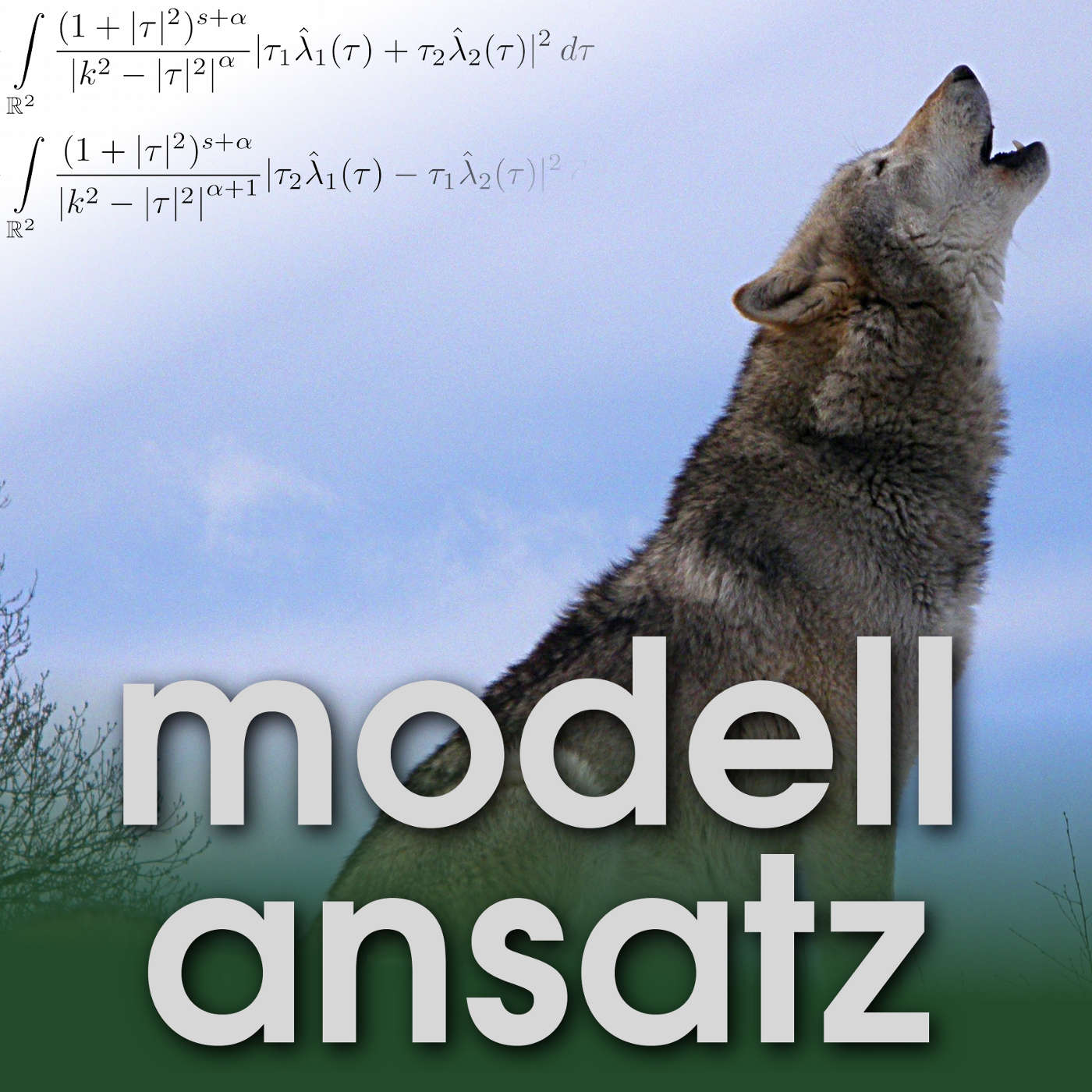 ModellansatzPopulation ModelsHow do populations evolve? This question inspired Alberto Saldaña to his PhD thesis on Partial symmetries of solutions to nonlinear elliptic and parabolic problems in bounded radial domains. He considered an extended Lotka-Volterra models which is describing the dynamics of two species such as wolves in a bounded radial domain: For each species, the model contains the diffusion of a individual beings, the birth rate , the saturation rate or concentration , and the aggressiveness rate . Starting from an initial condition, a distribution of and in the regarded domain, above equations with additional constraints f...2015-12-1022 min
ModellansatzPopulation ModelsHow do populations evolve? This question inspired Alberto Saldaña to his PhD thesis on Partial symmetries of solutions to nonlinear elliptic and parabolic problems in bounded radial domains. He considered an extended Lotka-Volterra models which is describing the dynamics of two species such as wolves in a bounded radial domain: For each species, the model contains the diffusion of a individual beings, the birth rate , the saturation rate or concentration , and the aggressiveness rate . Starting from an initial condition, a distribution of and in the regarded domain, above equations with additional constraints f...2015-12-1022 min Modellansatz - English episodes onlyPopulation ModelsHow do populations evolve? This question inspired Alberto Saldaña to his PhD thesis on Partial symmetries of solutions to nonlinear elliptic and parabolic problems in bounded radial domains. He considered an extended Lotka-Volterra models which is describing the dynamics of two species such as wolves in a bounded radial domain: For each species, the model contains the diffusion of a individual beings, the birth rate , the saturation rate or concentration , and the aggressiveness rate . Starting from an initial condition, a distribution of and in the regarded domain, above equations with additional constraints f...2015-12-1022 min
Modellansatz - English episodes onlyPopulation ModelsHow do populations evolve? This question inspired Alberto Saldaña to his PhD thesis on Partial symmetries of solutions to nonlinear elliptic and parabolic problems in bounded radial domains. He considered an extended Lotka-Volterra models which is describing the dynamics of two species such as wolves in a bounded radial domain: For each species, the model contains the diffusion of a individual beings, the birth rate , the saturation rate or concentration , and the aggressiveness rate . Starting from an initial condition, a distribution of and in the regarded domain, above equations with additional constraints f...2015-12-1022 min Coupling Geometric PDEs with Physics for Cell Morphology, Motility and Pattern FormationMinimising a relaxed Willmore functional for graphs subject to Dirichlet boundary conditionsDeckelnick, K
Thursday 10th September 2015 - 11:00 to 12:302015-10-061h 02
Coupling Geometric PDEs with Physics for Cell Morphology, Motility and Pattern FormationMinimising a relaxed Willmore functional for graphs subject to Dirichlet boundary conditionsDeckelnick, K
Thursday 10th September 2015 - 11:00 to 12:302015-10-061h 02 Periodic and Ergodic Spectral ProblemsHow to Place an Obstacle so as to Optimize the Dirichlet Eigenvalues in R2.Kiwan, R (A. U. Dubaï)
Wednesday 13 May 2015, 15:15-16:002015-05-2832 min
Periodic and Ergodic Spectral ProblemsHow to Place an Obstacle so as to Optimize the Dirichlet Eigenvalues in R2.Kiwan, R (A. U. Dubaï)
Wednesday 13 May 2015, 15:15-16:002015-05-2832 min Talking MachinesInterdisciplinary Data and Helping Humans Be CreativeIn Episode 10 we talk with David Blei of Columbia University. We talk about his work on latent dirichlet allocation, topic models, the PhD program in data that he’s helping to create at Columbia and why exploring data is inherently multidisciplinary. We learn about Markov Chain Monte Carlo and take a listener question about how machine learning can make humans more creative. 2015-05-0734 min
Talking MachinesInterdisciplinary Data and Helping Humans Be CreativeIn Episode 10 we talk with David Blei of Columbia University. We talk about his work on latent dirichlet allocation, topic models, the PhD program in data that he’s helping to create at Columbia and why exploring data is inherently multidisciplinary. We learn about Markov Chain Monte Carlo and take a listener question about how machine learning can make humans more creative. 2015-05-0734 min Talking MachinesInterdisciplinary Data and Helping Humans Be CreativeIn Episode 10 we talk with David Blei of Columbia University. We talk about his work on latent dirichlet allocation, topic models, the PhD program in data that he’s helping to create at Columbia and why exploring data is inherently multidisciplinary. We learn about Markov Chain Monte Carlo and take a listener question about how machine learning can make humans more creative.See omnystudio.com/listener for privacy information. Hosted on Acast. See acast.com/privacy for more information.2015-05-0734 min
Talking MachinesInterdisciplinary Data and Helping Humans Be CreativeIn Episode 10 we talk with David Blei of Columbia University. We talk about his work on latent dirichlet allocation, topic models, the PhD program in data that he’s helping to create at Columbia and why exploring data is inherently multidisciplinary. We learn about Markov Chain Monte Carlo and take a listener question about how machine learning can make humans more creative.See omnystudio.com/listener for privacy information. Hosted on Acast. See acast.com/privacy for more information.2015-05-0734 min Talking MachinesInterdisciplinary Data and Helping Humans Be CreativeIn Episode 10 we talk with David Blei of Columbia University. We talk about his work on latent dirichlet allocation, topic models, the PhD program in data that he’s helping to create at Columbia and why exploring data is inherently multidisciplinary. We learn about Markov Chain Monte Carlo and take a listener question about how machine learning can make humans more creative.
See omnystudio.com/listener for privacy information.2015-05-0734 min
Talking MachinesInterdisciplinary Data and Helping Humans Be CreativeIn Episode 10 we talk with David Blei of Columbia University. We talk about his work on latent dirichlet allocation, topic models, the PhD program in data that he’s helping to create at Columbia and why exploring data is inherently multidisciplinary. We learn about Markov Chain Monte Carlo and take a listener question about how machine learning can make humans more creative.
See omnystudio.com/listener for privacy information.2015-05-0734 min Talking MachinesUsing Models in the Wild and Women in Machine LearningIn episode four we talk with Hanna Wallach, of Microsoft Research. She's also a professor in the Department of Computer Science, University of Massachusetts Amherst and one of the founders of Women in Machine Learning (better known as WiML). We take a listener question about scalability and the size of data sets. And Ryan takes us through topic modeling using Latent Dirichlet allocation (say that five times fast).See omnystudio.com/listener for privacy information. Hosted on Acast. See acast.com/privacy for more information.2015-02-1245 min
Talking MachinesUsing Models in the Wild and Women in Machine LearningIn episode four we talk with Hanna Wallach, of Microsoft Research. She's also a professor in the Department of Computer Science, University of Massachusetts Amherst and one of the founders of Women in Machine Learning (better known as WiML). We take a listener question about scalability and the size of data sets. And Ryan takes us through topic modeling using Latent Dirichlet allocation (say that five times fast).See omnystudio.com/listener for privacy information. Hosted on Acast. See acast.com/privacy for more information.2015-02-1245 min Talking MachinesUsing Models in the Wild and Women in Machine LearningIn episode four we talk with Hanna Wallach, of Microsoft Research. She's also a professor in the Department of Computer Science, University of Massachusetts Amherst and one of the founders of Women in Machine Learning (better known as WiML). We take a listener question about scalability and the size of data sets. And Ryan takes us through topic modeling using Latent Dirichlet allocation (say that five times fast).
See omnystudio.com/listener for privacy information.2015-02-1245 min
Talking MachinesUsing Models in the Wild and Women in Machine LearningIn episode four we talk with Hanna Wallach, of Microsoft Research. She's also a professor in the Department of Computer Science, University of Massachusetts Amherst and one of the founders of Women in Machine Learning (better known as WiML). We take a listener question about scalability and the size of data sets. And Ryan takes us through topic modeling using Latent Dirichlet allocation (say that five times fast).
See omnystudio.com/listener for privacy information.2015-02-1245 min Talking MachinesUsing Models in the Wild and Women in Machine LearningIn episode four we talk with Hanna Wallach, of Microsoft Research. She's also a professor in the Department of Computer Science, University of Massachusetts Amherst and one of the founders of Women in Machine Learning (better known as WiML). We take a listener question about scalability and the size of data sets. And Ryan takes us through topic modeling using Latent Dirichlet allocation (say that five times fast). 2015-02-1245 min
Talking MachinesUsing Models in the Wild and Women in Machine LearningIn episode four we talk with Hanna Wallach, of Microsoft Research. She's also a professor in the Department of Computer Science, University of Massachusetts Amherst and one of the founders of Women in Machine Learning (better known as WiML). We take a listener question about scalability and the size of data sets. And Ryan takes us through topic modeling using Latent Dirichlet allocation (say that five times fast). 2015-02-1245 min Interactions between Dynamics of Group Actions and Number TheoryImprovement of Dirichlet's Theorem and homogeneous dynamicsShi, R (Xiamen University)
Friday 27 June 2014, 11:30-12:302014-07-111h 01
Interactions between Dynamics of Group Actions and Number TheoryImprovement of Dirichlet's Theorem and homogeneous dynamicsShi, R (Xiamen University)
Friday 27 June 2014, 11:30-12:302014-07-111h 01 The Mathematics of Liquid CrystalsTangent unit-vector fields: nonabelian homotopy invariants, the Dirichlet energy and their applications in liquid crystal devicesMajumdar, A (University of Bath)
Tuesday 09 April 2013, 10:00-11:002013-04-2453 min
The Mathematics of Liquid CrystalsTangent unit-vector fields: nonabelian homotopy invariants, the Dirichlet energy and their applications in liquid crystal devicesMajumdar, A (University of Bath)
Tuesday 09 April 2013, 10:00-11:002013-04-2453 min Mathematics and Applications of Branes in String and M-theoryThe Dirichlet problem in AdS and beyondRangamani, M (University of Durham)
Wednesday 09 May 2012, 16:00-17:002012-05-1400 min
Mathematics and Applications of Branes in String and M-theoryThe Dirichlet problem in AdS and beyondRangamani, M (University of Durham)
Wednesday 09 May 2012, 16:00-17:002012-05-1400 min Algebraic Lie TheoryAn action of SL(2,Z) on the space of Dirichlet series, and some associated computationsThompson, JG (Cambridge and Florida)
Friday 29 May 2009, 11:00-12:00
Group Theory, Geometry and Representation Theory: Abel Prize 20082011-04-201h 03
Algebraic Lie TheoryAn action of SL(2,Z) on the space of Dirichlet series, and some associated computationsThompson, JG (Cambridge and Florida)
Friday 29 May 2009, 11:00-12:00
Group Theory, Geometry and Representation Theory: Abel Prize 20082011-04-201h 03 Partial Differential Equations in Kinetic TheoriesLinear Boltzmann equation and some Dirichlet seriesBobylev, A (Karlstad)
Tuesday 28 September 2010, 15:00-15:452010-10-0138 min
Partial Differential Equations in Kinetic TheoriesLinear Boltzmann equation and some Dirichlet seriesBobylev, A (Karlstad)
Tuesday 28 September 2010, 15:00-15:452010-10-0138 min State of SearchFascination Of Latent Dirichlet AllocationBas and Roy welcome back the SEO Head of MediaVest, Pete Young. They discuss the recent voting changes at Sphinn, as well as a recent Rand Fishkin post at SEOMoz entitled Latent Dirichlet Allocation (LDA) and Googles Rankings are Remarkably Well Correlated.2010-09-0756 min
State of SearchFascination Of Latent Dirichlet AllocationBas and Roy welcome back the SEO Head of MediaVest, Pete Young. They discuss the recent voting changes at Sphinn, as well as a recent Rand Fishkin post at SEOMoz entitled Latent Dirichlet Allocation (LDA) and Googles Rankings are Remarkably Well Correlated.2010-09-0756 min Analysis on Graphs and its ApplicationsDirichlet-to-Neumann techniques for periodic problemsPavlov, B (Auckland)
Friday 30 July 2010, 14:00-14.452010-08-0232 min
Analysis on Graphs and its ApplicationsDirichlet-to-Neumann techniques for periodic problemsPavlov, B (Auckland)
Friday 30 July 2010, 14:00-14.452010-08-0232 min Analysis on Graphs and its ApplicationsDirichlet to Neumann Maps for Infinite Metric GraphsCarlson, R (Colorado)
Thursday 29 July 2010, 14:45-15.302010-07-3049 min
Analysis on Graphs and its ApplicationsDirichlet to Neumann Maps for Infinite Metric GraphsCarlson, R (Colorado)
Thursday 29 July 2010, 14:45-15.302010-07-3049 min Mathematics and Physics of Anderson Localization: 50 Years AfterFluctuations and growth of the magnitude of the Dirichlet determinants of Anderson Model at all disordersGoldstein, M (Toronto)
Thursday 18 December 2008, 16:30-17:30
Classical and Quantum Transport in the Presence of Disorder2009-01-2250 min
Mathematics and Physics of Anderson Localization: 50 Years AfterFluctuations and growth of the magnitude of the Dirichlet determinants of Anderson Model at all disordersGoldstein, M (Toronto)
Thursday 18 December 2008, 16:30-17:30
Classical and Quantum Transport in the Presence of Disorder2009-01-2250 min Analysis on Graphs and its ApplicationsDirichlet eigenvalues in a narrow stripSolomyak, M (Weizmann Institute of Science)
Thursday 12 April 2007, 15:30-16:30
Graph Models of Mesoscopic Systems, Wave-Guides and Nano-Structures2008-05-191h 01
Analysis on Graphs and its ApplicationsDirichlet eigenvalues in a narrow stripSolomyak, M (Weizmann Institute of Science)
Thursday 12 April 2007, 15:30-16:30
Graph Models of Mesoscopic Systems, Wave-Guides and Nano-Structures2008-05-191h 01 Analysis on Graphs and its ApplicationsSpectral asymptotics of the Dirichlet Laplacian on fat graphsGrieser, D (Carl von Ossietzky, Oldenburg)
Thursday 12 April 2007, 14:00-15:00
Graph Models of Mesoscopic Systems, Wave-Guides and Nano-Structures2008-04-161h 02
Analysis on Graphs and its ApplicationsSpectral asymptotics of the Dirichlet Laplacian on fat graphsGrieser, D (Carl von Ossietzky, Oldenburg)
Thursday 12 April 2007, 14:00-15:00
Graph Models of Mesoscopic Systems, Wave-Guides and Nano-Structures2008-04-161h 02